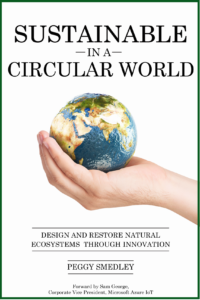The IoT (Internet of Things) has been around for decades—and here at Connected World we have been covering the space since before Kevin Ashton uttered the three-word phrase. I am sure many of you are asking who? That is how fast things change, and we move to the next acronym(s). Now we are hearing all about gen AI (artificial intelligence) and how it is going to completely alter the way we work. The question now becomes: How do these two come together and what will this all ultimately mean for the future of work?
What Is the IoT?
First, let’s back up a little bit. What exactly is the Internet of Things? The IoT is simply devices that are embedded with technology that can talk to other devices, enabling the exchange of data so realtime decisions can be made. The exchange of data is very critical so realtime decisions can be made. I love saying that. It’s really very important when you think about actionable decisions here.
The Internet of Things has seen a rise in both consumer and enterprise applications. I mean we have seen some really cool products and applications. Okay, maybe some really not so great ones as well. Let’s explore what that has looked like in the past—and what that will look like in the future with gen AI by its side.
What’s the History?
We have been on a wild ride for the past several decades when it comes to connectivity and realtime data exchange. While the term the Internet of Things has been around since before the turn of the century, there was an evolution that took place with everything unfolding from M2M (machine-to-machine) to the IoT.
It was little more than a decade and a half ago that we were truly talking about the importance of what the IoT could accomplish in full force, more specifically, as the future enabler of digital transformation and connected devices in so many industries. And I mean so many industries like healthcare, connected car, connected home, smart meters, and the list goes on and on. These industries had such high hopes for the future of IoT.
Journey back to the year 2010 before Alexa was in our homes (and before she was recording all our voices to train artificial intelligence, that’s a conversation for another time), and even before the Apple Watch was on our wrists tracking our every physical movement. We were just getting to know Siri and we were just truly getting to know the power of what the Internet of Things was all about. And we were just starting to understand why data was so important to digital transformation.
We had big hopes—and big predictions, remember 50 billion connected devices—for the Internet of Things, but it was still a burgeoning market at that time.
The truth is the IoT emerged ever so methodically. The drivers for the IoT came from business, social, economic, and technological realms. The true economic value of the Internet of Things ended up coming from industries such as healthcare, agriculture, construction, transportation, automotive, and manufacturing.
How Are the IoT and AI Converging Today?
Now with the help of purposely built and trained AI, we have new opportunities to tap into all of this IoT data that we didn’t properly capitalize on before. A term that has yet to truly take off—AIoT—offers an interesting perspective. The integration of AI and the IoT will deliver maximum value to an organization.
But here’s the hard truth. Computers right now only spit out what humans put into it. It is the old saying, garbage in, garbage out. And candidly that is what we often get many times these days when using gen AI.
The Internet of Things and connected devices need accurate data and lots of it to boost the efficiency that is needed in business today. This is the only way AI can help learn, train, and even get better. We aren’t at that place yet where it has fully taught itself to provide that accurate information and to reason and to really make the decisions we need 24/7.
Here’s the good news though. Gen AI is still in its infancy and with the right information it will continue to blossom fast. And that means the best is yet to come. With all this in mind, collaboration will be key in the days ahead.
Why Is Collaboration Key?
As we move forward in a new era of work, companies should be thinking about how collaboration and partnerships matter. Good partnerships can help us understand, master, and develop new prosperous plans. What that ultimately leads to is what is the next step for all this data and what matters more than just understanding an acronym. The result is new and improved data sets can offer an opportunity to change the way productivity is managed and free us up to focus on more important business tasks. We are talking about that end goal, right?
We must consider how we will work together to bring about a new era of work, all leveraged by the IoT and AI. Remember, digital transformation is a journey, not a destination. The future starts now.
Want to tweet about this article? Use hashtags #IoT #sustainability #AI #5G #cloud #edge #futureofwork #digitaltransformation #green #ecosystem #environmental #circularworld #AIoT


